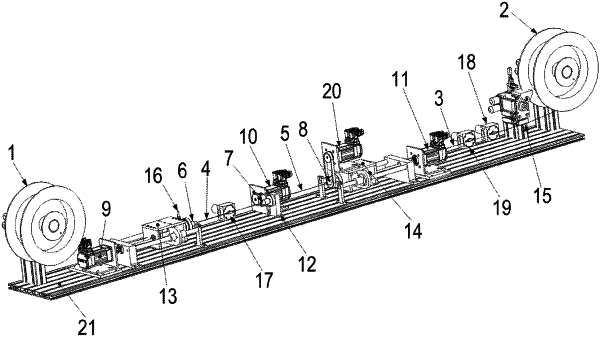| CPC B21F 9/005 (2013.01) [B21F 7/00 (2013.01); B21F 23/00 (2013.01); B23B 31/24 (2013.01); G01R 33/0052 (2013.01); H01F 1/0304 (2013.01); H01F 41/04 (2013.01)] | 24 Claims |

|
1. A device for producing a Wiegand wire and/or a pulse wire from a wire, comprising:
a first clamping chuck;
a second clamping chuck;
a third clamping chuck;
a first linear actuator; and
a second linear actuator;
wherein the clamping chucks are adapted to feed the wire therethrough, the wire being releasably connectable in a torsionally fixed manner to the three clamping chucks and/or connectable to the three clamping chucks in a releasable, torsionally fixed and nonpositive manner;
wherein the clamping chucks are set apart from one another in a wire direction, the second clamping chuck being located between the first clamping chuck and the third clamping chuck in the wire direction;
wherein the second clamping chuck is rotatably mounted to apply a torsion to a first wire section and to apply a reverse torsion to a second wire section, the first wire section being located between the first clamping chuck and the second clamping chuck, the second wire section being located between the third clamping chuck and the second clamping chuck;
wherein the first linear actuator is adapted to control and/or regulate a distance in the wire direction between the first clamping chuck and the second clamping chuck; and
wherein the second linear actuator is adapted to control and/or regulate a distance in the wire direction between the second clamping chuck and the third clamping chuck.
|